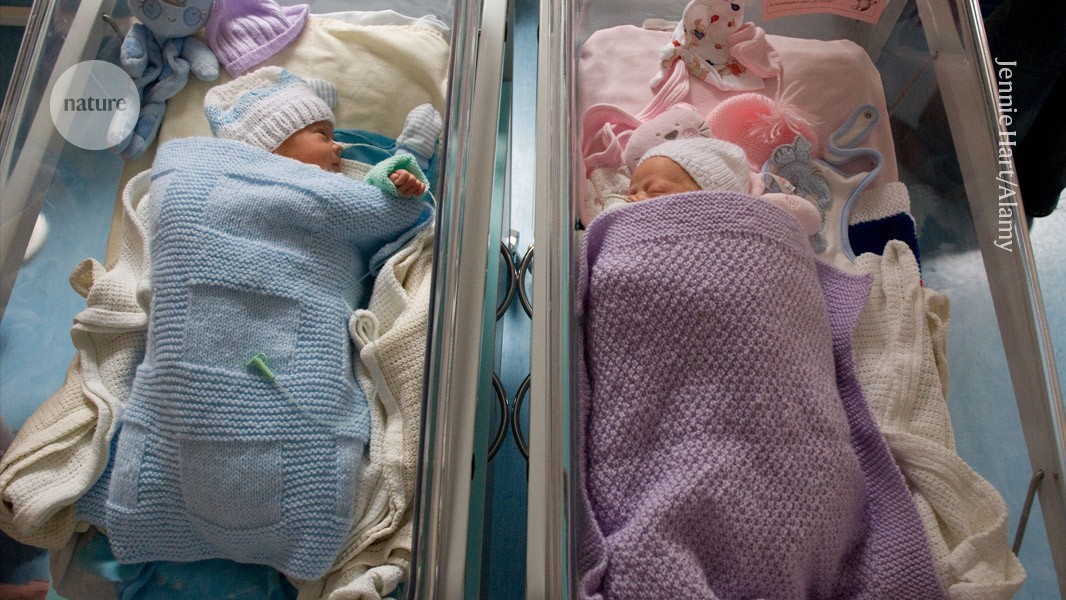
Study finds that some women carry genetic variants that are associated with having children of a particular sex.Credit: Jennie Hart/Alamy
In families with several children of the same sex, the odds of having another baby of that sex are higher than of having one of the opposite sex, according to a large study1 that investigated the maternal and genetic factors that influence the sex of offspring.
The results, published in Science Advances today, find that in families with three boys, there is a 61% chance that the next sibling is male. For families with three girls, there was a 58% chance that the next child would be female.
The findings challenge what people have been told about their baby’s sex, which is that for each pregnancy, there is an equal chance of having either a boy or a girl, says Alex Polyakov, an obstetrician and researcher at the University of Melbourne, Australia. “Based on these findings, you have to tell couples that their chance of having a different-sex child from what they already have is actually less than 50:50,” he says.
Age influences sex
Researchers at Harvard University in Boston, Massachusetts, looked at the sex of children born to 58,007 female nurses in the United States between 1956 and 2015, and the different factors that might explain why some had only boys and others only girls.
They found that in two-child families, having one child of each sex was more common than two boys or two girls, but in families with three or more children, siblings of the same sex were more common than a mix of both. In their analysis, the researchers excluded the last birth of each woman to reduce the influence of parental choice — for instance, some people choose to stop having children once they have both boys and girls.
The team also found that women aged 29 or older when they had their first child had a 13% higher chance of giving birth to only male or only female children than were women younger than 23.
The authors note that changes in vaginal pH as women age could explain this phenomenon. For instance, the changes could influence the sex of the child by affecting whether sperm carrying the X chromosome or the Y chromosome are more successful at fertilizing the egg, says Polyakov.
Genetic influence
A genomic analysis also showed that some women had one of two common genetic variants that were associated with having children of a particular sex. A change in chromosome 10, in a gene called NSUN6, was associated with a higher probability of having only girls, while women with a change in a single DNA letter on chromosome 18, near a gene called TSHZ1, were more likely to have only boys.


